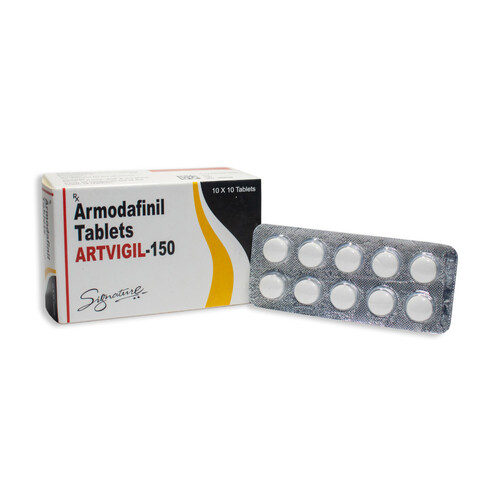Can Modafinil Enhance Symptom Management in Postural Orthostatic Tachycardia Syndrome (POTS)?
Living with Postural Orthostatic Tachycardia Syndrome (POTS) can be overwhelming, with symptoms like dizziness, heart palpitations, shaking, and shortness of breath triggered by standing. Finding effective management strategies is challenging due to limited long-term studies on treatments. Modafinil, a medication known for promoting wakefulness, has emerged as a potential option for alleviating symptoms and improving daily functioning in people with POTS. Exploring its role sheds light on how it might offer relief for those navigating this complex condition.
Understanding Postural Orthostatic Tachycardia Syndrome (POTS)
What is POTS?
POTS is a condition where people experience ongoing symptoms of dizziness and an unusually fast heart rate when they stand up. To be diagnosed with POTS, these symptoms must last for at least six months. Specifically, a person’s heart rate increases by 30 beats per minute or more within ten minutes of standing. For teenagers, the increase is slightly higher, at 40 beats per minute.
Who is Affected by POTS?
In the United States, about 0.2% of people have POTS. It is more common in white women of childbearing age, and many develop symptoms during their teenage years. POTS often occurs alongside other health issues like depression, migraines, irritable bowel syndrome, and chronic fatigue, making it even more complicated to manage.
Why Does POTS Happen?
POTS isn’t just one disease but a collection of symptoms with different causes. Common reasons include:
- Autonomic Nervous System Issues: Problems with the part of the nervous system that controls automatic body functions can lead to blood pooling in the legs and a faster heart rate to compensate.
- Low Blood Volume: Some people with POTS have lower than normal blood volume, which can make symptoms worse.
- Overactive Sympathetic Nervous System: High levels of certain chemicals in the blood can cause the heart to beat faster.
Understanding these causes helps doctors create personalized treatment plans.
Common Symptoms of POTS
People with POTS often feel worse when they stand and better when they lie down. Common symptoms include:
- Feeling lightheaded or about to faint
- Rapid or irregular heartbeats
- Shaking or tremors
- Blurred vision
- Shortness of breath
- Extreme tiredness and difficulty concentrating, often called “brain fog”
These symptoms can make everyday activities difficult and reduce overall quality of life.
Current Management Strategies for POTS
Managing POTS usually involves a mix of lifestyle changes and medications, tailored to each person’s specific symptoms and underlying causes.
Lifestyle Changes
Non-medical approaches are often the first step because they have fewer side effects. These include:
- Breathing Exercises: Techniques to help control breathing and reduce shortness of breath.
- Exercise Programs: Gradual and structured exercise can improve heart health and reduce symptoms when standing.
- Increasing Fluids and Salt: Drinking more fluids and eating more salt can help increase blood volume. Wearing compression garments like stockings can also help keep blood flowing properly.
Medications
If lifestyle changes aren’t enough, doctors may prescribe medications to help manage specific symptoms. Common options include:
- Medications to Increase Blood Volume:
- Fludrocortisone: Helps the body retain salt and water to boost blood volume.
- Desmopressin: Promotes water retention.
- Midodrine: Constricts blood vessels to reduce blood pooling.
- Medications to Slow Heart Rate:
- Beta-Blockers: Help reduce heart rate and palpitations.
- Ivabradine: Lowers heart rate without affecting blood pressure.
- Medications to Regulate Nervous System Activity:
- Clonidine and Methyldopa: Reduce overactivity of the nervous system.
- Pyridostigmine: Helps control heart rate by enhancing parasympathetic activity.
Modafinil
Modafinil is being explored as a treatment option for managing symptoms like fatigue and difficulty concentrating in POTS patients. Unlike some other stimulants, modafinil may help improve alertness without significantly increasing heart rate, making it a potentially useful addition to existing treatment plans. The following sections will discuss how modafinil works, its benefits, and how it compares to other treatments.
Modafinil: How It Works and What It’s Used For
What is Modafinil?
Modafinil is a medication that helps people stay awake. It’s commonly prescribed for conditions like narcolepsy, and sleep apnea, and for those who work irregular hours. While doctors aren’t entirely sure how it works, modafinil is known to increase certain chemicals in the brain that promote wakefulness and alertness without the strong side effects often seen with other stimulants.
Approved Uses of Modafinil
Modafinil is officially approved to treat:
- Narcolepsy: Helps manage excessive daytime sleepiness.
- Obstructive Sleep Apnea (OSA): Reduces sleepiness even when sleep apnea is being treated.
- Shift Work Sleep Disorder (SWSD): Improves alertness for people who work non-traditional hours.
Because of its ability to reduce fatigue and improve concentration, modafinil is considered a helpful treatment for some of the non-physical symptoms of POTS.
Modafinil in POTS Management
Why Consider Modafinil for POTS?
Living with POTS often means battling not just physical symptoms like a racing heart and dizziness, but also persistent fatigue and trouble concentrating, commonly known as “brain fog.” While many treatments focus on managing the heart rate and blood volume, they might not fully address these non-physical challenges. Modafinil, a medication typically used to promote wakefulness, offers a potential solution by targeting these specific issues. Its ability to enhance alertness and mental clarity makes it a promising option for improving daily functioning and overall quality of life for those with POTS.
What Does the Research Say?
Although research on modafinil for POTS is still in the early stages, some studies show positive results. For instance, a small trial found that modafinil didn’t significantly increase heart rates in POTS patients compared to a placebo. This is encouraging because it suggests that modafinil can help with fatigue without worsening the primary heart-related symptoms of POTS.
Additionally, a review of patient records revealed that about two-thirds of POTS patients experienced noticeable improvements in their energy levels and alertness when taking modafinil. These findings indicate that modafinil can effectively reduce the tiredness and mental fog that make daily activities challenging.
How Effective is Modafinil for POTS?
Modafinil primarily helps by reducing fatigue and boosting cognitive performance. While it might not directly lower the fast heart rate that occurs when standing, it can make it easier to stay focused and energized throughout the day. This improvement in mental clarity can help patients engage more effectively in other treatments, like exercise programs, which are essential for managing POTS.
However, it’s important to note that most of the evidence supporting modafinil’s effectiveness in POTS comes from smaller studies. More extensive research is needed to confirm these benefits and fully understand how modafinil can best treat POTS.
How Does Modafinil Compare to Other Treatments?
When looking at medications for POTS, modafinil offers some unique advantages:
- Traditional Stimulants: Unlike medications like amphetamines, modafinil has a lower risk of addiction and fewer side effects. It specifically targets issues like fatigue and cognitive impairment without significantly increasing heart rate, making it a safer choice for POTS patients.
- Beta-Blockers: While beta-blockers can effectively slow down the heart rate and reduce palpitations, they may also cause tiredness and affect concentration. Modafinil, on the other hand, directly addresses these cognitive issues without impacting heart rate.
- Ivabradine: This medication lowers the heart rate without affecting blood pressure, similar to beta-blockers. However, modafinil focuses on improving mental function and reducing fatigue, offering complementary benefits rather than overlapping with heart rate management.
- Other Medications: Drugs like pyridostigmine and midodrine target different aspects of POTS, such as blood vessel constriction and nervous system regulation. Modafinil can be used alongside these treatments to tackle additional symptoms like fatigue and brain fog.
Overall, modafinil can be a valuable addition to a comprehensive POTS treatment plan, especially for those struggling with non-physical symptoms that other medications might not fully address.
Clinical Considerations for Modafinil Use in POTS
Who Should Consider Modafinil?
Modafinil may be a suitable option for individuals with POTS who experience significant fatigue and trouble concentrating that aren’t fully managed by other treatments. If you find that tiredness and “brain fog” are making daily activities difficult, modafinil might help improve your energy levels and mental clarity.
How to Take Modafinil
For those with POTS, the typical dose of modafinil ranges from 100 to 200 mg each day, usually split into two doses to keep symptoms under control throughout the day. It’s best to start with a lower dose to see how your body reacts and to minimize any potential side effects. Your doctor can adjust the dosage based on how well you tolerate the medication and how effective it is for your symptoms.
Potential Side Effects
While modafinil is generally well-tolerated, some people might experience side effects, including:
- Headaches
- Nausea
- Trouble sleeping
- Dizziness
- Dry mouth
In rare cases, more serious reactions like skin rashes or allergic responses can occur. It’s important to watch for these symptoms, especially when you first start taking modafinil, and inform your doctor if they happen.
Additionally, modafinil can affect pregnancy, so women of childbearing age should use effective contraception while taking this medication.
Keeping Track of Your Progress
Regular check-ins with your healthcare provider are essential when using modafinil for POTS. During these appointments, you and your doctor can:
- Assess Symptoms: Discuss any changes in fatigue, concentration, and overall well-being.
- Monitor Heart Rate and Blood Pressure: Ensure that modafinil isn’t affecting your heart rate or blood pressure in unexpected ways.
- Review Side Effects: Talk about any side effects you may be experiencing and decide if dosage adjustments are needed.
- Ensure Safe Use: For women, confirm that contraception methods are in place to prevent pregnancy due to modafinil’s potential risks.
Maintaining open communication with your healthcare provider helps ensure that modafinil is working effectively and safely as part of your POTS management plan.
Integrating Modafinil into a Comprehensive POTS Treatment Plan
Combining Medications and Lifestyle Changes
Modafinil works best when used alongside other treatments for POTS. Here’s how it can fit into a broader management strategy:
- Exercise Programs: With increased energy from modafinil, you might find it easier to stick to exercise routines that help improve heart health and reduce POTS symptoms.
- Hydration and Diet: Drinking plenty of fluids and consuming enough salt can help maintain blood volume, complementing the benefits of modafinil.
- Compression Gear: Wearing compression stockings can help keep blood flowing properly, allowing you to take full advantage of the mental and physical energy boosts from modafinil.
By combining modafinil with these non-medical approaches, you can achieve more balanced and effective symptom control.
Personalized Treatment Plans
Every person with POTS has a unique set of symptoms and underlying causes. To get the most out of modafinil, it’s important to tailor your treatment plan to your specific needs. Consider the following when working with your healthcare provider:
- Severity of Symptoms: Focus on the symptoms that are most disruptive to your daily life, such as extreme fatigue or difficulty concentrating.
- Underlying Causes: Understanding whether your POTS is related to issues like low blood volume or an overactive nervous system can help determine how modafinil fits into your overall treatment.
- Lifestyle and Preferences: Your daily routine, work demands, and personal preferences should all be taken into account to create a treatment plan that you can stick with long-term.
Real-Life Examples
Case 1: Emily, a 30-year-old woman with POTS, struggles with constant fatigue and difficulty focusing at her job. After starting modafinil at 100 mg twice a day, she notices a significant improvement in her energy levels and concentration, allowing her to perform better at work and engage more fully in her exercise routine.
Case 2: David, a 40-year-old man with POTS, experiences “brain fog” that makes managing daily tasks challenging. Modafinil at 150 mg daily helps him stay alert and clear-headed, enhancing his ability to handle work responsibilities and personal activities alongside his existing treatments like midodrine and pyridostigmine.
These examples show how modafinil can be effectively incorporated into personalized treatment plans to address specific symptoms and improve the quality of life for individuals with POTS.
Limitations and Future Directions
Current Gaps in Research
While early studies suggest that modafinil may help reduce fatigue and improve concentration in POTS patients, the research is still limited. Most studies have involved small groups of participants and lack the rigorous design of larger, randomized controlled trials. This makes it hard to draw firm conclusions about how effective and safe modafinil is for treating POTS in the long term.
Personalized Medicine Approaches
POTS varies widely among individuals, with different underlying causes like autonomic dysfunction, low blood volume, or an overactive sympathetic nervous system. Future research could focus on identifying which specific groups of POTS patients are most likely to benefit from modafinil. By understanding factors like genetics or specific symptom patterns, treatments can be better tailored to each person’s unique situation.
Understanding How Modafinil Works in POTS
To make the most of modafinil as a treatment option, it’s important to learn more about how it affects the body in the context of POTS. Research could explore whether modafinil influences factors like blood volume, blood vessel function, or nervous system activity in ways that specifically help POTS symptoms. Gaining a deeper understanding of these mechanisms can help optimize how modafinil is used and possibly lead to the development of new treatments.
Need for More Comprehensive Studies
To firmly establish modafinil as a reliable treatment for POTS, more extensive studies are needed. Large-scale, long-term trials involving multiple research centres can provide more definitive answers about how well modafinil works and its safety over time. These studies should also look at how modafinil affects overall quality of life and how well patients can continue with other aspects of their treatment while using modafinil.
Exploring Combination Therapies
Future research should investigate how modafinil can be effectively combined with other treatments for POTS. Understanding how modafinil interacts with medications like beta-blockers or midodrine, as well as with non-medical treatments like exercise and hydration strategies, can help create comprehensive treatment plans that address both physical and cognitive symptoms more effectively.
Conclusion
Modafinil’s Potential in Managing POTS
Modafinil shows promise as a treatment option for managing the non-physical symptoms of POTS, particularly fatigue and cognitive difficulties. While it doesn’t directly address the rapid heart rate that comes with standing, its ability to boost alertness and reduce “brain fog” can greatly enhance the daily lives of those with POTS. Although the current evidence is encouraging, more research is needed to fully understand its benefits and establish clear guidelines for its use.
What This Means for Treatment
Incorporating modafinil into your POTS treatment plan should be done carefully and with professional guidance. It’s most effective for those who continue to struggle with fatigue and concentration issues despite other treatments. Starting with a low dose and gradually increasing it can help manage any side effects while finding the right balance for symptom relief. For women of childbearing age, using reliable contraception is important due to modafinil’s potential risks during pregnancy.
Final Thoughts
Living with Postural Orthostatic Tachycardia Syndrome is challenging, but with a comprehensive and personalized treatment approach, managing both physical and cognitive symptoms is possible. Modafinil offers a targeted way to address some of the most debilitating non-physical symptoms, complementing existing treatments aimed at controlling heart rate and blood volume. As research continues, modafinil may become a key component in the arsenal against POTS, helping patients achieve better symptom control and an improved quality of life. Ongoing studies and a deeper understanding of how modafinil works in POTS will be essential for integrating this medication effectively into treatment plans.








